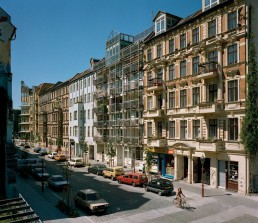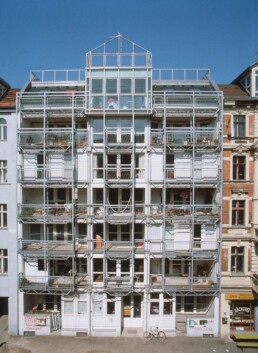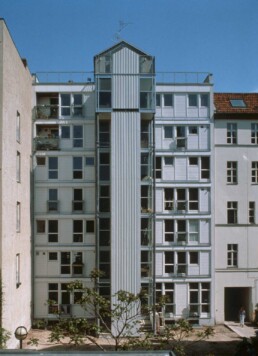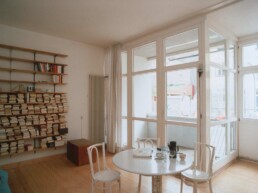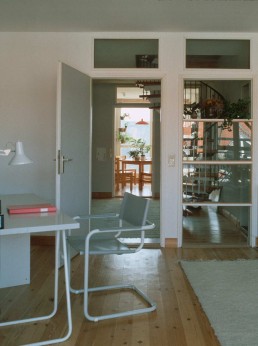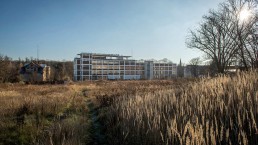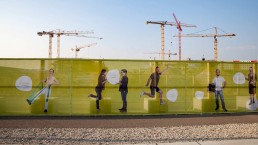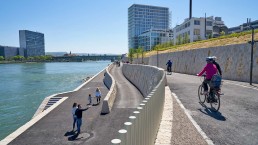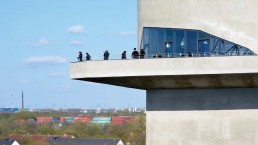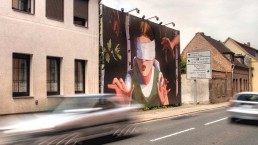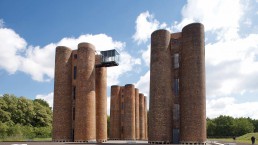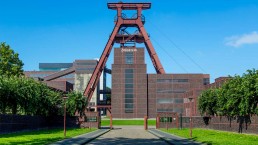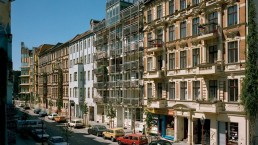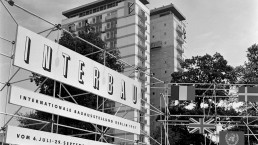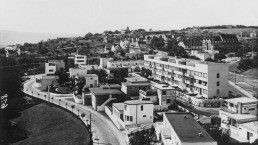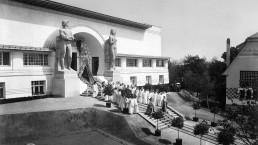Self-Construction Experiment Wohnregal
Rediscovery of Cooperatives
The idea of DIY in building a new apartment in the form of a “Wohnregal” (residential shelving) was developed on an empty building site in the heart of the city as an alternative concept to homes in the leafy suburbs. Instead of moving to the outskirts of a city, residents should stay in their district, and enhance the inner city as an urban and a socially diverse living space. The project became a model for IBAIBA Internationale Bauausstellung Berlin and urban housing construction.
12 individual apartments were stacked vertically over one another like houses in what was dubbed the “Wohnregal”, or residential shelving. The framework for these shelves was produced from pre-fabricated concrete parts and timber, a modern, robust and affordable solution. The apartments were then built into the frame like shelf units. This not only brought the terraced house to the inner city, it also re-interpreted it as a new form of apartment.
To finance their building, the residents turned to the tradition of the cooperative, and founded a self-construction cooperative, Selbstbaugenossenschaft Berlin e.G., in 1984, which also owned the apartments. It was the first housing construction cooperative for a joint new building project since 1945.
The future residents, who were also members of the cooperative and contractors, were not only involved in planning, they also took the individual construction into their own hands. Self-construction was an integral part of the financing and reduced the overall costs significantly. As a result, each of the mostly two-story units had a different floor plan.
The “Wohnregal” in Admiralstrasse was a daring experiment and construction took longer than anticipated. There were also disputes over the design and financing. Completed in 1986, it was one of the self-construction projects of IBA Berlin. It is still considered a role model for architects, policy-makers and cooperatives.
AddressAdmiralstraße 16, 10999 Berlin-KreuzbergProject participantsContractor: The residents, represented by a cooperative, Selbstbaugenossenschaft Berlin e.G., 22 residents (5 children)
Architects: Peter Stürzebecher, Kjell Nylund and Christof Puttfarken (Berlin)Sources and further information:Senatsverwaltung für Bau- und Wohnungswesen Berlin, S.T.E.R.N. (Hrsg.): Internationale Bauausstellung Berlin 1987 Projektübersicht, Berlin 1991.
S.T.E.R.N. Gesellschaft der behutsamen Stadterneuerung Berlin mbH (Hrsg.): Kjell Nylund, Peter Stürzebecher. Das Wohnregal im Schnittpunkt der Linien. Bewohner planen, bauen und leben gemeinsam in der Admiralstraße 16, Berlin-Kreuzberg, 1988.LinksDer Tagesspiegel
Forschungsinitiative IBA '87
ZEIT online
